The Arabic letter Qaf (ق) is one of the strong and distinct letters in the Arabic alphabet. It is characterized by its deep, guttural sound and its unique shape marked by two dots above it. The forms of the letter Qaf vary depending on its position within a word, making it essential for learners to master these forms accurately to read and write fluently. In this lesson, we will explore the different forms of the letter Qaf at the beginning, middle, and end of words—both in connected and isolated forms—along with illustrative and practical examples.
Interactive Exercises on the Forms of the Letter Qaf
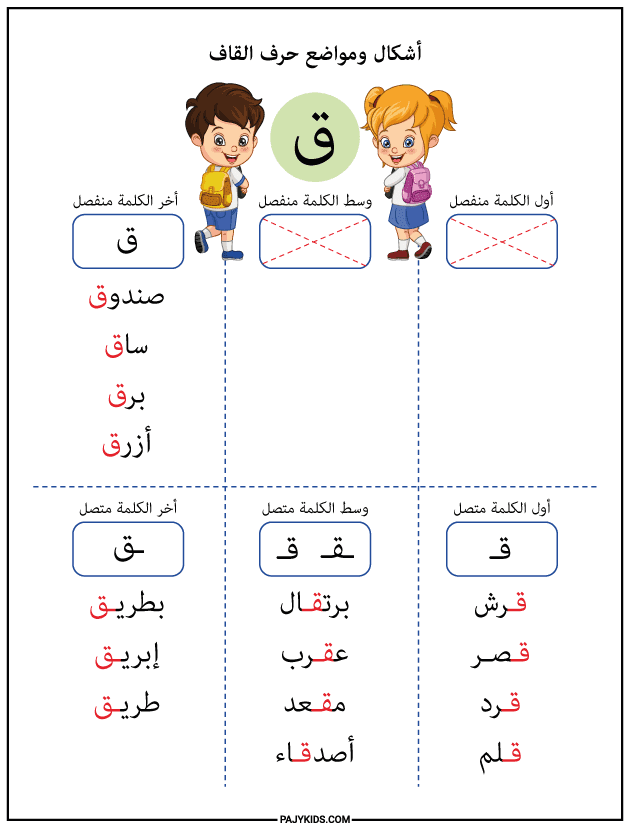
- Form of the Letter Qaf at the Beginning of a Word
When Qaf appears at the beginning of a word, it connects only to the letter that follows it and is written in this form: “قـ”.
Examples: Qamar (قمر), Qalam (قلم), Qahwa (قهوة), Qirsh (قرش), Qird (قرد).
In this form, the letter appears medium-sized with two clear dots above it. This is one of the most common forms of the letter Qaf, and students should become familiar with it early on as it frequently appears in everyday vocabulary.
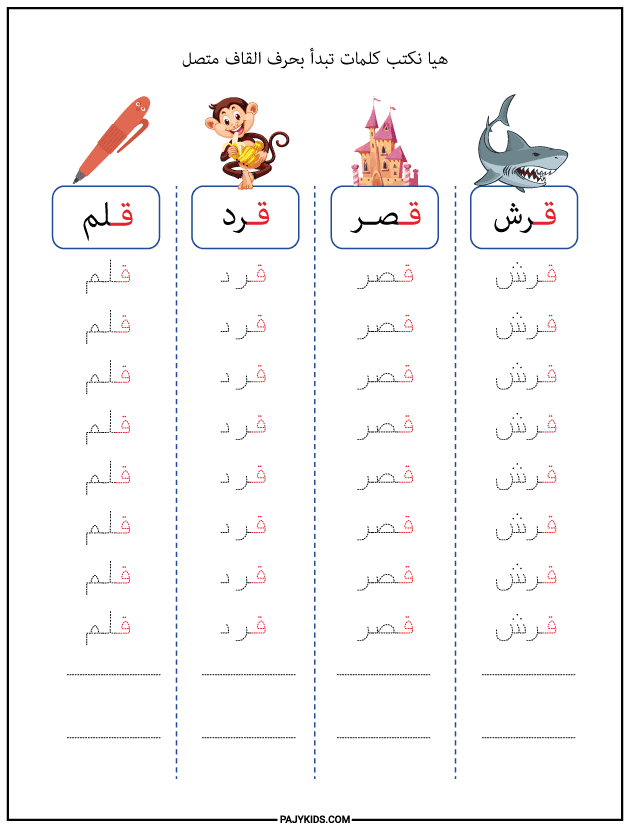
- Form of the Letter Qaf in the Middle of a Word
When Qaf occurs in the middle of a word, it connects to both the preceding and following letters and takes this form: “ـقـ”.
Examples: Burtuqal (برتقال), Aqrab (عقرب), Maq’ad (مقعد), Asdiqa’ (أصدقاء).
In this position, the letter blends smoothly with neighboring letters while retaining its two distinct dots. This form is considered one of the more complex forms of the letter Qaf, requiring consistent practice to master.
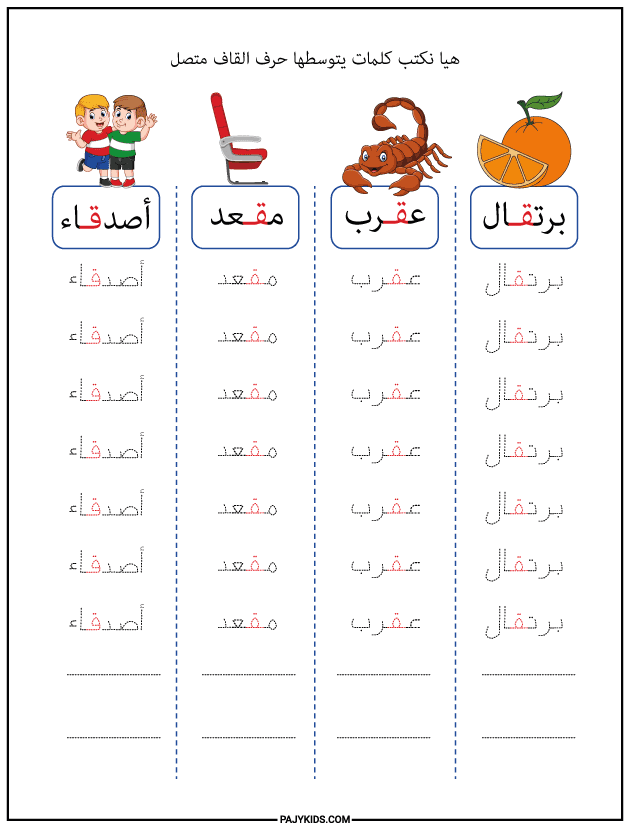
- Form of the Letter Qaf at the End of a Word (Connected)
When Qaf appears at the end of a word and is connected to the preceding letter, it is written as: “ـق”.
Examples: Nafaq (نفق), Batariq (بطريق), Tabaq (طبق), Ibrīq (إبريق), Tariq (طريق).
In this form, the letter extends horizontally on the writing line and maintains its signature curve with two dots above it. It is one of the easier forms of the letter Qaf to recognize in written text.
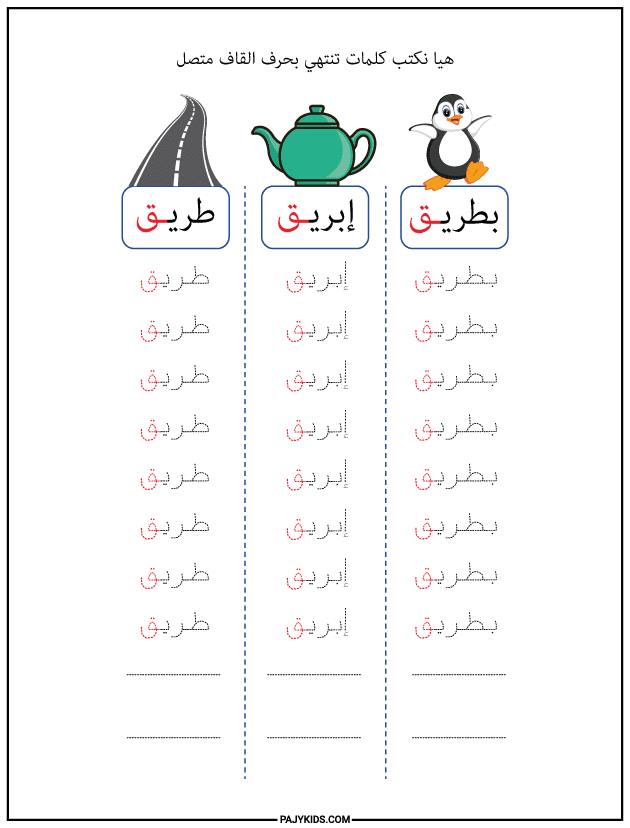
- Form of the Letter Qaf at the End of a Word (Isolated)
If Qaf comes at the end of a word following a letter that does not connect to it, it is written separately as: “ق”.
Examples: Sūq (سوق), Sāq (ساق), Barq (برق), Tawq (طوق), Sunduq (صندوق), Azraq (أزرق).
Here, the letter stands alone on the writing line, keeping its full structure and two upper dots. This is one of the most visually clear forms of the letter Qaf, making it easy for learners to identify during reading.
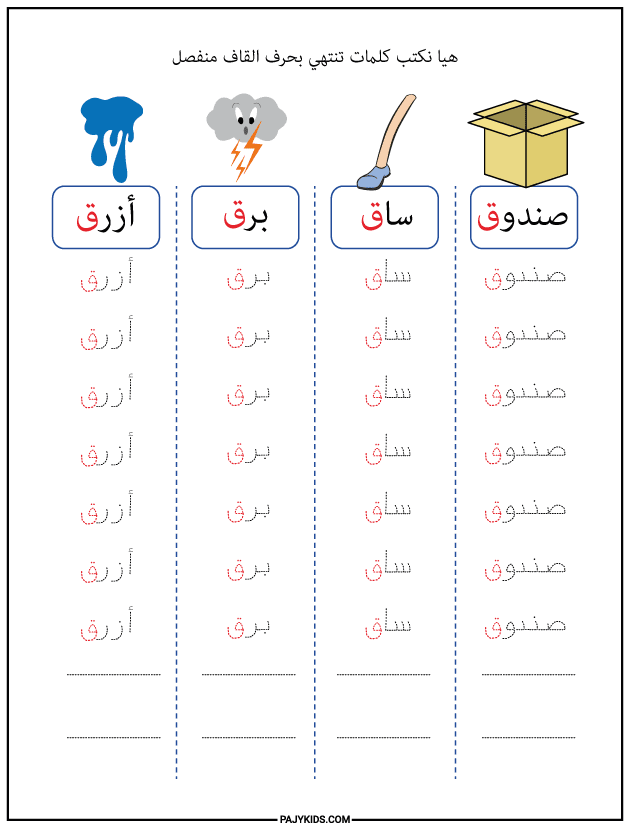
Regular practice with the forms of Qaf significantly enhances Arabic handwriting and improves the ability to distinguish between similar letters, such as Qaf (ق) and Fa (ف). Mastering the various shapes of this letter builds fluency in both reading and writing, especially in early stages of Arabic language learning. It is highly recommended to use real words and short sentences during practice to help learners apply each form in practical contexts.